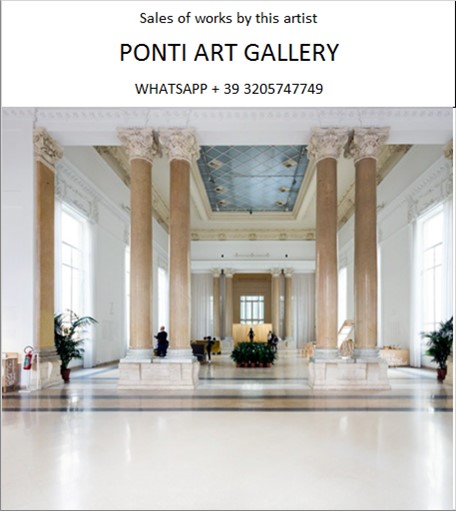Ponti Art Gallery is interested in buying and selling works
of art by this artist.

George Grosz Biography
George Grosz, born Georg Ehrenfried Groß on July 26, 1893, in Berlin, Germany, was a pivotal figure in the art world whose work remains a powerful critique of society and politics. His art, characterized by its sharp satirical edge, provides a vitriolic commentary on the social, political, and economic turmoil of his times. Grosz's journey from a young artist in Germany to an influential figure in the Dada and New Objectivity movements, and eventually an emigrant to the United States, reflects a life deeply intertwined with the tumultuous events of the early 20th century.
Grosz's early life was marked by modest beginnings. The son of a pub owner, his family faced financial difficulties after his father's death in 1900, leading them to move to the Wedding district of Berlin. Despite these challenges, Grosz showed an early interest in art, encouraged by his cousin. He began attending a weekly drawing class taught by a local painter, which laid the foundation for his artistic development. His formal education in art started at the Dresden Academy of Fine Arts between 1909 and 1911, where he was exposed to a range of artistic influences and techniques. He continued his studies at the Berlin College of Arts and Crafts under Emil Orlik, further honing his skills.
The outbreak of World War I was a turning point for Grosz. Initially volunteering for military service in 1914, his experiences in the army and his subsequent discharge due to health issues deeply affected him. These experiences, combined with his observations of the societal changes in post-war Germany, fueled his critical perspective on war, militarism, and the social order. Grosz's art from this period is characterized by grotesque caricatures that depict the horrors of war and the decadence of Berlin's society during the Weimar Republic.
Grosz's involvement with the Dada movement in Berlin further shaped his artistic direction. Dada's rejection of traditional values and its embrace of absurdity and anti-art sentiments resonated with Grosz's own disillusionment with society. His work during this time, including his contributions to the First International Dada Fair in 1920, showcased his talent for satire and his commitment to using art as a form of social critique.
In the 1920s, Grosz became associated with the New Objectivity movement, which sought to depict the realities of the time with a new level of precision and cynicism. His work from this period, including iconic collections of drawings such as "Ecce Homo" and "The Face of the Ruling Class," offered a scathing indictment of the corruption, inequality, and moral bankruptcy of Weimar Germany. Grosz's art was not without controversy; he faced legal challenges and was prosecuted for insulting the army and blasphemy, highlighting the provocative nature of his work.
The rise of the Nazi Party and the increasing danger it posed to dissenting voices led Grosz to emigrate to the United States in 1933. Settling in New York, he taught at the Art Students League and continued to produce art, though his focus shifted somewhat from political satire to more personal and existential themes. Despite this shift, Grosz remained a critical observer of society, and his work from his American period continued to reflect his deep-seated skepticism towards authority and his empathy for the downtrodden.
Grosz's return to Berlin in 1958, shortly before his death on July 6, 1959, marked the end of a life that had traversed some of the most significant upheavals of the 20th century. His legacy, however, endures in his vast body of work that continues to challenge, provoke, and inspire. George Grosz's art remains a testament to the power of visual satire as a means of social and political critique, capturing the absurdities and injustices of his time with biting accuracy and enduring relevance.
George Grosz Quotes and Sales
of Works
Ponti Art Gallery selects and deals with paintings by the
artist. Upon request, we provide free estimates and
evaluations, communicate prices, quotations, and current
market values.
If you are interested in BUYING or SELLING works by the
artist, contact us immediately.
If you wish to sell or receive an evaluation of the
works:
Send us a frontal photo of the painting, one of the back,
and one of the signature. Also, indicate the dimensions of
the work. Inform us about the purchase origin of the work
and any kind of available documentation (purchase
receipts, certificates of authenticity, publications). One
of our operators will respond to you on the same day. We
guarantee maximum confidentiality and extreme
professionalism.
If you wish to purchase works by the painter: Contact us
and let us know your request. We will inform you about the
available works. We also offer the possibility to
subscribe to our NEWSLETTER, through which you will be
informed at the beginning of each month about the latest
acquisitions of the art gallery.
You can send us pictures of the work:
